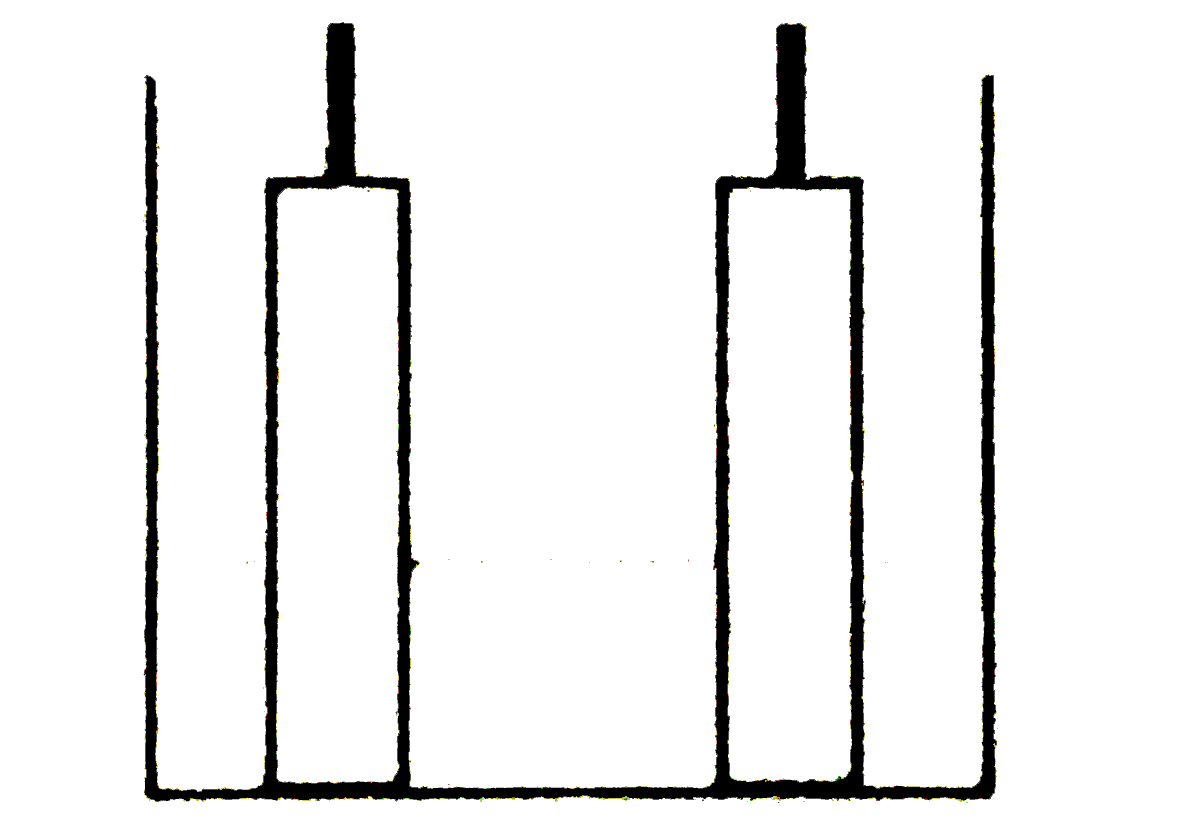For a dilute solution of a strong electrolyte, the variation of molar conductivity with concentration is given by
∧m=∧∘.m+Ac
∧m=∧∘.m−Ac
∧m=∧∘.m+A√c
∧m=∧∘.m−A√c
The correct Answer is:D
To solve the question regarding the variation of molar conductivity with concentration for a dilute solution of a strong electrolyte, we will follow these steps:
1. Understanding Molar Conductivity:
Molar conductivity (λm) is defined as the conductivity of an electrolyte solution divided by its molar concentration. It is a measure of how well an electrolyte conducts electricity in solution.
2. Debye-Hückel Equation:
For a dilute solution of a strong electrolyte, the variation of molar conductivity with concentration can be described by the Debye-Hückel equation. The equation is given by:
λm=λ0m−A√c
where:
- λm is the molar conductivity at concentration c,
- λ0m is the molar conductivity at infinite dilution,
- A is a constant that depends on the nature of the electrolyte,
- c is the concentration of the electrolyte.
3. Interpreting the Terms:
- λ0m: This value represents the maximum conductivity of the electrolyte when it is fully dissociated and at infinite dilution.
- A√c: This term accounts for the decrease in molar conductivity as the concentration of the electrolyte increases. The square root relationship indicates that as concentration increases, the effect on conductivity is not linear.
4. Conclusion:
The relationship provided by the Debye-Hückel equation shows that for a dilute solution of a strong electrolyte, the molar conductivity decreases with increasing concentration due to interactions between ions.
Final Expression:
Thus, the variation of molar conductivity with concentration for a dilute solution of a strong electrolyte is given by:
λm=λ0m−A√c
Molar conductivity (λm) is defined as the conductivity of an electrolyte solution divided by its molar concentration. It is a measure of how well an electrolyte conducts electricity in solution.
For a dilute solution of a strong electrolyte, the variation of molar conductivity with concentration can be described by the Debye-Hückel equation. The equation is given by:
λm=λ0m−A√c
where:
- λm is the molar conductivity at concentration c,
- λ0m is the molar conductivity at infinite dilution,
- A is a constant that depends on the nature of the electrolyte,
- c is the concentration of the electrolyte.
- λ0m: This value represents the maximum conductivity of the electrolyte when it is fully dissociated and at infinite dilution.
- A√c: This term accounts for the decrease in molar conductivity as the concentration of the electrolyte increases. The square root relationship indicates that as concentration increases, the effect on conductivity is not linear.
The relationship provided by the Debye-Hückel equation shows that for a dilute solution of a strong electrolyte, the molar conductivity decreases with increasing concentration due to interactions between ions.
Thus, the variation of molar conductivity with concentration for a dilute solution of a strong electrolyte is given by:
λm=λ0m−A√c
Topper's Solved these Questions
- ELECTROCHEMISTRYBOOK - CENGAGE CHEMISTRY ENGLISHCHAPTER - ELECTROCHEMISTRYEXERCISE - Exerciseassertion -Reasoning
25 Videos
- ELECTROCHEMISTRYBOOK - CENGAGE CHEMISTRY ENGLISHCHAPTER - ELECTROCHEMISTRYEXERCISE - Exerciseinterger
8 Videos
- ELECTROCHEMISTRYBOOK - CENGAGE CHEMISTRY ENGLISHCHAPTER - ELECTROCHEMISTRYEXERCISE - Exercisemultiple Correct Ansers
53 Videos
- D AND F BLOCK ELEMENTSBOOK - CENGAGE CHEMISTRY ENGLISHCHAPTER - D AND F BLOCK ELEMENTSEXERCISE - Archives Subjective
29 Videos
- GENERAL PRINCIPLES AND PROCESS OF ISOLATION OF ELEMENTSBOOK - CENGAGE CHEMISTRY ENGLISHCHAPTER - GENERAL PRINCIPLES AND PROCESS OF ISOLATION OF ELEMENTSEXERCISE - Archives (Subjective)
14 Videos
Similar Questions
Knowledge Check
Dilute acids are strong electrolytes. Why?
AProduce the large number of hydronium ionsBProduce the smaller number of hydronium ionsCProduce the large number of hydrogen ionsDProduce the large number of copper ionsThe variation in Λm with concentration for a strong electrolyte can be represented by the equation, Λm=Λ∘m−AC1/2 The value of constant A for a given solvent and temperature depends upon the type of electrolyte i.e., cations and anions produced on dissociation of electrolyte in the solution .
Which of the following statements is correct regarding variations of molar conductivity with concentration.AMolar conductivity decrease with decrease in concentrationBVariation in molar conductivity of weak and strong electrolytes is same.CMolar conductivity increases with decrease in concentration.DWhen concentration of the solution approaches zero, the molar conductivity is known as conductance.
Define conductivity and molar conductivity for the solution of an electrolyte. Discuss their variation with concentration.
View Solution(a) Define molar conductivity of a solution and explain how molar conductivity changes with change in concentration of solution for a weak and a strong electrolyte.
(b) The resistance of conductivity cell containing 0.001MKCl solution at 298K is 1500ohm. What is the cell constant if the conductivity of 0.001MKCl solution at 298K is 0.146×10−3Scm−1
View SolutionA resistance of 50Ω is registered when two electrodes are suspended into a beaker containing a dilute solution of a strong electrolyte such that exactly half of them are submerged into solution as shown in figure. If the solution is diluted by adding pure water (negligible conductivity) so as to just completely submerge the electrodes, the new ressitance offered by the solution would be: ltbegt

View SolutionThe increase in the molar conductivity of HCl with dilution is due to
View SolutionOn diluting aqueous solution of weak electrolyte to 100 times
View SolutionThe molar conductivity of strong electrolyte
View Solution
